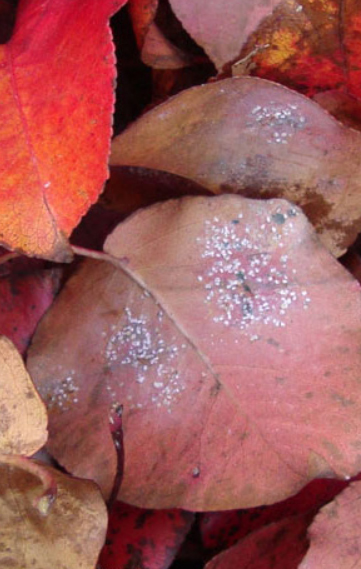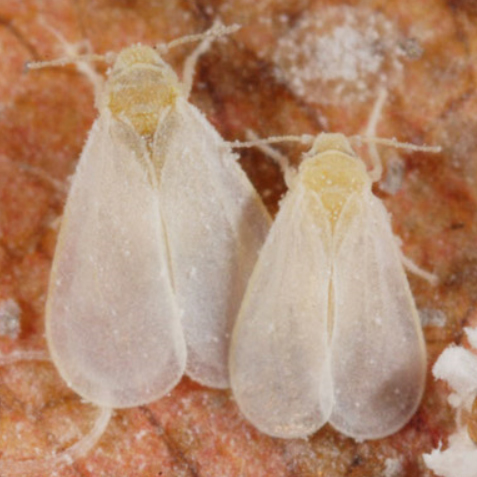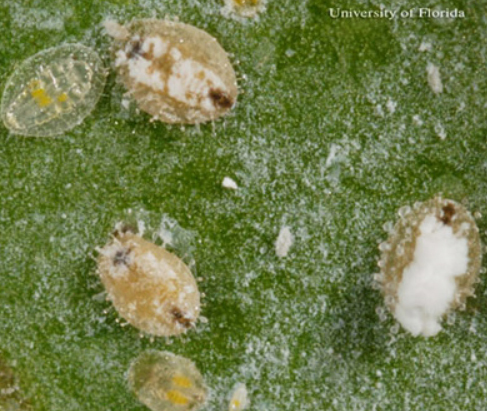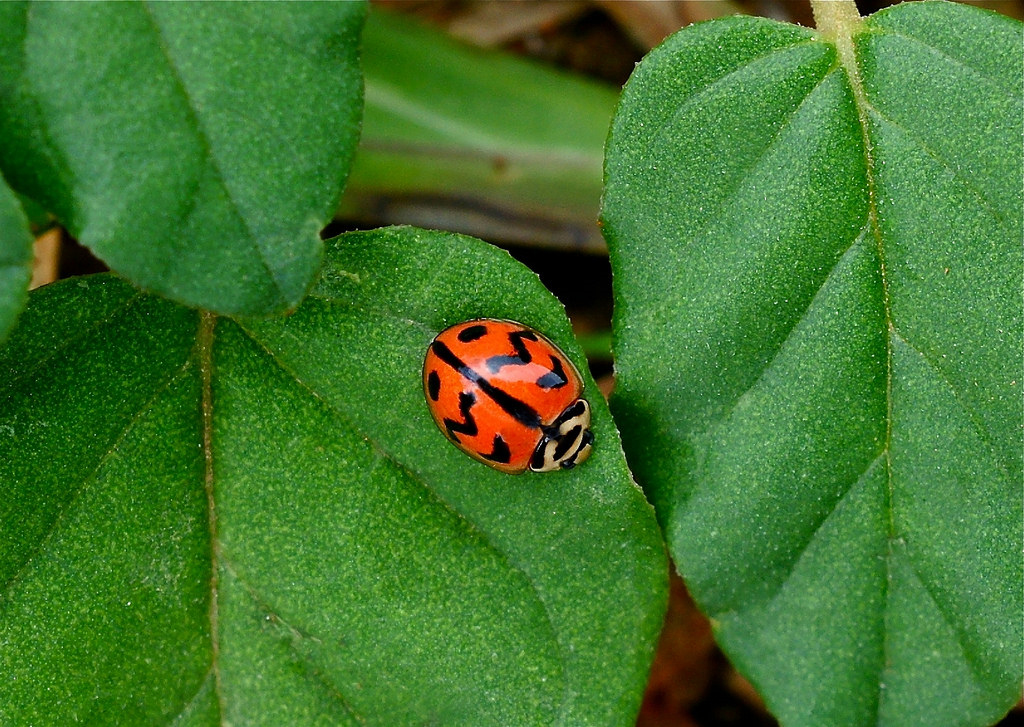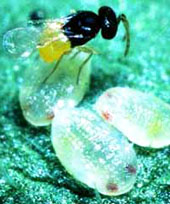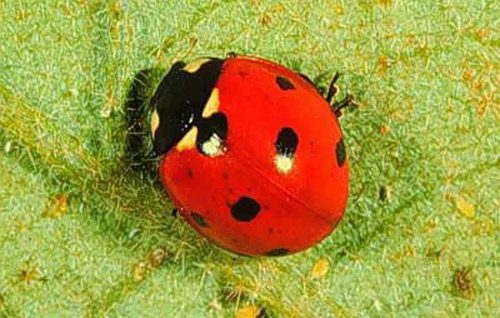
Welcome to Warner’s Tree Surgery, Mesa’s Top Tree Care Service. With over half a century of experience, I specialize in diagnosing and treating a wide range of tree diseases.
If You Have Ash Trees In Arizona, You MUST Watch This Video!
This Ash Tree With Dying Leaves From The Ash Flys Is In Gilbert AZ In 2017
In this video, we invite you to discover our company, our comprehensive services, and our unwavering commitment to tree health.
Ash Whitefly Must Watch This Video
common name: ash whitefly
scientific name: Siphoninus phillyreae (Haliday) (Insecta: Hemiptera: Aleyrodidae: Aleyrodinae)
Introduction - Synonymy - Distribution - Description and Biology - Host Plants - Natural Enemies - Selected References
Introduction (Back to Top)
The ash whitefly, Siphoninus phillyreae (Haliday), is a pest of numerous ornamental and fruit crops, including citrus. It causes severe damage to pear and apple in Europe. Most ash whiteflies in California were found on pomegranate, ash tree, pear, apple, loquat and citrus. Heavy infestations cause leaf wilt, early leaf drop and smaller fruit (Bellows et al. 1990).
Discovered in Florida in 2010, if it becomes established it could become a pest of ornamental plants and possibly other crops.
Several life stages of the ash whitefly, Siphoninus phillyreae (Haliday), on fallen Bradford pear leaves.
Figure 1. Several life stages of the ash whitefly, Siphoninus phillyreae (Haliday), on fallen Bradford pear leaves. Photograph by Lyle J. Buss, University of Florida.
Synonymy (Back to Top)
The ash whitefly, Siphoninus phillyreae, was described as Aleyrodes phillyreae by Haliday (1835), on Phillyrea latifolia collected in Dublin, Ireland. It has several synonyms listed in Mound and Halsey (1978).
Distribution (Back to Top)
Native to Europe, the Mediterranean and northern Africa, the ash whitefly is found in numerous countries, including:
Africa: Cameroon, Egypt, Ethiopia, Libya, Morocco, Sudan
Asia: India, Iran, Israel, Pakistan, Saudi Arabia, Syria
Europe: Austria, Corsica, Czech Republic, Cyprus, England, France, Germany, Hungary, Ireland, Italy, Poland, Romania, Spain, Switzerland, Yugoslavia
North America: United States (California, Florida)
Oceania: Australia (New South Wales, South Australia, Queensland and Victoria)
(Mound and Halsey 1978, Bellows et al. 1990, Raymond Gill personal communication, Chris Baptista personal communication, Stocks and Hodges 2010).
In the United States, ash whitefly was first collected in Los Angeles County, California in 1988, and then spread to other counties. It was later discovered in Arizona, Nevada and New Mexico. It appeared in Raleigh, North Carolina in 1993. It is also reported from Arizona, Georgia, Nevada, New Mexico, South Carolina and Texas. A successful biological control program using a parasitic wasp reduced infestations to undetectable levels (western states) or possibly eliminated the infestion (North Carolina). In 2010, it was discovered in central (Lake Buena Vista) and northwestern (Panama City) Florida (Stocks and Hodges 2010).
Description and Biology (Back to Top)
Adult: The adult appears much like a typical whitefly with a light dusting of white wax. Depending on temperature, females live from 30 to 60 days, while males live an average of nine days. This rapid development time, without the presence of the parasitiod, initially produced numerous generations per year in California, whereas only two to three generations were reported in Egypt. Plus, the ability of all life stages to overwinter on non-deciduous hosts allows a rapid build-up in population at the start of the season (Stocks and Hodges 2010). Winged females lays eggs on the underside of the leaves. When the nymphs emerge, they rarely move far and feed on the plant sap until pupation (Gillespie 2000).
Adult ash whiteflies, Siphoninus phillyreae (Haliday).
Figure 2. Adult ash whiteflies, Siphoninus phillyreae (Haliday). Photograph by Lyle J. Buss, University of Florida.
Pupa: On first observation, the pupal case appears similar to the white armor of a male snow scale. Closer observation with a hand lens reveals a whitefly pupal case with two longitudinal tufts of white wax. The vasiform orifice is surrounded by dark brown derma (inner, thicker layer of the cuticle), with the anal area appearing as a dark brown spot. Lateral areas of the pupal case are light beige. Depending on the age, lesser or greater amounts of white wax will be present. The dorsal surface has 40 to 50 long glassy tubercles similar to the cornicles found on aphids. These tubercular structures produce a droplet of glassy wax and this gives the pupal case an unusual appearance. The longitudinal white tufts of wax obscure some glassy tubercles (R.J. Gill, personal communication). The pupal case size is 0.8 to 1.0 mm long by 0.55 to 0.7 mm wide and is tan or beige in color(Mound 1966, Stocks and Hodges 2010).
Pupal stage of the ash whitefly, Siphoninus phillyreae (Haliday), showing glassy, wax droplets
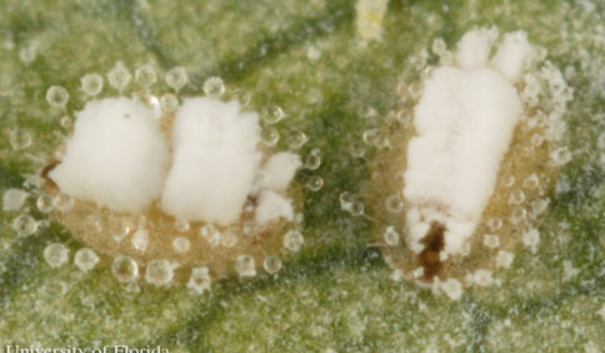 .
.
Figure 3. Pupal stage of the ash whitefly, Siphoninus phillyreae (Haliday), showing glassy, wax droplets. Photograph by Lyle J. Buss, University of Florida.
Puparia (3 tan-colored individuals) and juveniles (translucent nymphs) of the ash whitefly, Siphonius phillyreae (Haliday), on pomegranate.
Figure 4. Puparia (3 tan-colored individuals) and juveniles (translucent nymphs) of the ash whitefly, Siphonius phillyreae (Haliday), on pomegranate. Photograph by Lyle J. Buss, University of Florida.
Host Plants (Back to Top)
European Insect Arrives In Arizona
Staff Writer Gardeners have a new insect pest to worry about this spring. The ash whitefly (Siphonium phillyreae) from Europe arrived in Phoenix and Tucson last November by way of California. We should expect to see its appearance in Cochise County in late April.
The gnat-sized ash whitefly infests and seriously damages a variety of landscape trees and ornamentals. In California it has attacked apples, pears, pomegranates, apricots, peaches, citrus, olive, ash, and other, shade trees. The whitefly has apparently not affected any native desert plants, but infestations appear to be spreading to more host plants than are normally attacked in its native European range from Ireland to Egypt.
 Ash whiteflies can kill full grown trees by repeatedly destroying all of the tree's leaves.
Ash whiteflies can kill full grown trees by repeatedly destroying all of the tree's leaves.
I have witnessed this myself
Warner
Leaves affected by the whitefly turn yellow, curl, and drop prematurely. In addition, whiteflies excrete a sugary honeydew that attracts sooty mold fungi, further damaging the tree. Infestations of flying adult ash whitefly have been compared to a light snow flurry in appearance. They are multivolting, producing more than one generation per year, and do best at temperatures around 77 degrees.
Experiments in California have shown that common pesticides are completely ineffective against the ash whitefly. However, laboratory experiments with two biological controls indicate that the whitefly's natural European predators may be used successfully in the U.S. to control the insect. Field studies are currently under way using a small parasitic wasp, Encarsia Formosa, and a ladybird beetle, Clitostethus arcuatus, both imported from Europe. The ladybird beetle has not cleared quarantine yet, but the wasp has recently been released. Serious infestations of ash whitefly generally do not occur in Europe because of the presence of these natural predators. It will take some time to develop a suitable biological control program in the U.S.
Concerned growers can contact Dr. David Byrne, University of Arizona entomologist, for more information.
See Also
University Of California, Riverside
Center for Invasive Species Research
The ash whitefly is a polyphagous species found on several plant families, (modified from Bellows et al. 1990) including:
Aleo See OREGON DEPARTMENT OF AGRICULTURE FACT SHEETS AND PEST ALERTS
Bignoniaceae:
Catalpa X chilopsis, catalpa hybrid
Leguminosae:
Afzelia sp., pod mahogany
Cercis occidentalis, western redbud; C. siliquastrum, Judas tree
Lythraceae:
Lagerstroemia indica, crape myrtle
Magnoliaceae:
Liriodendron tulipifera, tulip tree
Magnolia stellata, star magnolia
Oleaceae:
Fraxinus excelsior, European ash; F. latifolia, Oregon ash; F. ornus, flowering ash; F. syriaca, Syrian ash; F. uhdei, Shamel ash; F. uhdei 'Tomlinson', Tomlinson ash; F. velutina 'Modesto', Modesto ash; F. velutina var. glabra, Arizona ash; F. velutina var. coriacea, western ash
Ligustrum spp., privets
Olea africana (=O. chrysophylla), wild olive; O. europaea, common olive
Phillyrea latifolia (=P. media), a phillyrea
Syringa X hyacinthiflora, a common lilac; S. laciniata, cut-leaf lilac; S. vulgaris, common lilac
Punicaceae:
Punica granatum, pomegranate
Rhamnaceae:
Rhamnus alaternus, buckthorn
Ziziphus spina-christi, crown of thorns
Rosaceae:
Amelanchier denticulata, serviceberry
Chaenomeles X speciosa, flowering quince
Crataegus mollis, hawthorn; C. monogyna, English hawthorn; C. laevigata (=C. oxyacantha), hawthorn
Cydonia oblonga, quince
Eriobotrya deflexa, golden loquat
Heteromeles arbutifolia, California Christmas berry
Malus domestica, apple; M. floribunda, Japanese flowering crab; M. fusca, Oregon crabapple; M. 'Hopa', a crabapple; M. 'Red Jade', a crabapple; M. X scheideckeri, Scheidecker crabapple
Mespilus sp., mespilus
Prunus armeniaca, apricot; P. X blireiana, blue plum hybrid; P. persica, peach; P. salicina, Santa Rosa plum; P. virginiana var. melanocarpa, choke cherry
Pyracantha sp., pyracantha
Pyrus calleryana, ornamental pear; P. communis (=P. sativa), pear; P. kawakamii, flowering pear; P. pyrifolia, Japanese sand pear
Rubiaceae:
Cephalanthus occidentalis var. californicus, buttonbush
Rutaceae:
Citrus sp., tangerine; C. limon, lemon; C. sinensis, navel orange; C. sinensis, Valencia orange
Fortunella sp., kumquat.
Natural Enemies (Back to Top)
Ash whitefly has the potential to become a serious pest in new environments. However, it has several natural enemies that can control its populations to under economic thresholds. These natural enemies include (Stocks and Hodges 2010):
Predators:
Clitostethus arcuatus (Rossi)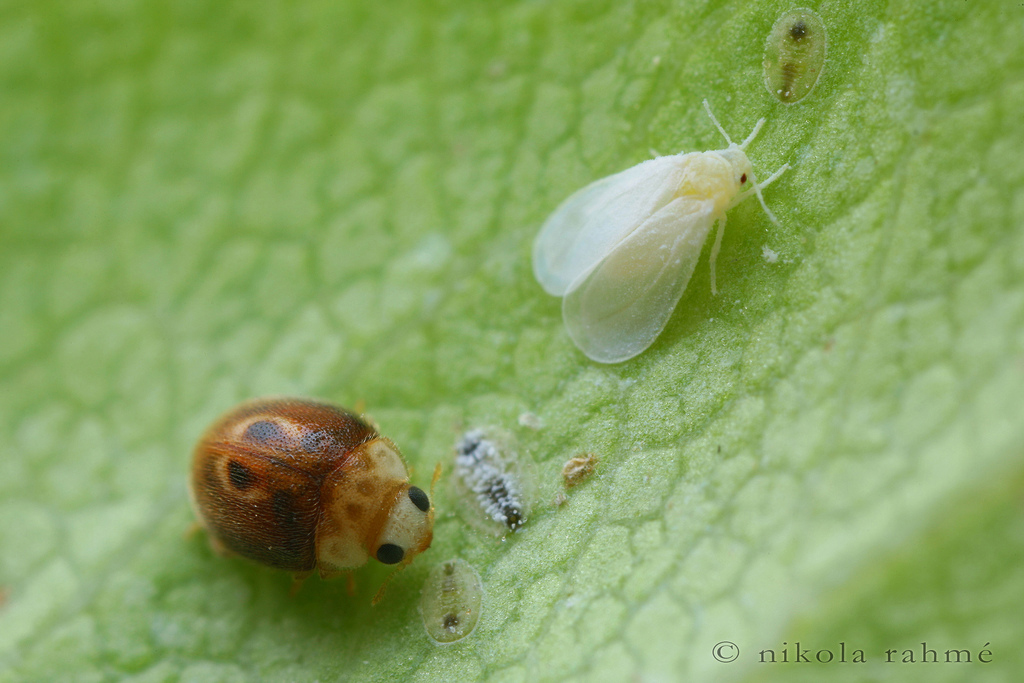
Clitostethus arcuatus (Rossi) (Coleoptera: Coccinellidae) is considered as one of the most important natural biological control agents of the ash whitefly, Siphoninus phillyreae (Haliday) (Hemiptera: Aleyrodidae) in Iran. In the current survey, the development, survival, longevity, fecundity, feeding behaviour, and population dynamics of the predator under laboratory and field conditions were studied. The longevity of female insects was significantly longer than that of males. Total feeding of 4th larval instars and females was significantly higher than males and other larval instars.
The overall mortality rate from egg to adult under laboratory conditions was 22.7% while under field conditions it was 38.2%. Copulation lasted approximately 67 minutes while the average pre-mating and pre-oviposition times recorded were 3.8 and 1.8 days, respectively. The mean number of eggs laid by each female was 181. The adults could survive starvation for 4 days with a normal longevity of 62-73 days. The maximum population density of the predator was recorded in late August that coincided with the decline of the S. phillyreae population. C. arcuatus had four generations per year, and the adults were observed until mid December. Possible application of C. arcuatus for biological control of S. phillyreae in integrated pest management programs is discussed
Menochilus sexmaculatus (Fabricius)
Scymnus pallidivestis Mulsant
Parasites:
Coccophagus eleaphilus Silvestri
Encarsia inaron (Walker), E. partenopea Masi, E. formosa Gahan, E. galilea Rivnay, E. punicae Hayat, E. pseudopartenopea Viggiani and MArizonazone, E. siphonini Silvestri
Eretmocerus corni Haldeman, E. siphonini Viggiani and Battaglia
The California Department of Food and Agriculture imported Encarsia sp. from Israel and Italy,
and the coccinellid beetle Clitostethus arcuatus for the control of ash whitefly in California (Bellows et al. 1990). Encarsia inaron was discovered in the ash whitefly infestation in central Florida, while an unidentified parasitoid was associated with the infestation in northwestern Florida.
Encarsia is a large genus of minute parasitic wasps of the family Aphelinidae. The genus is very diverse with currently about 400 described species and worldwide distribution.[1] The number of existing species is expected to be several times higher because many species are still undescribed.[2] Encarsia is a very complex genus, with specimens showing both inter- and intra-specific variations, making morphological classification difficult.[3]
The adult wasps, tiny insects about 1 or 2 millimeters in size, are primarily parasitoids of sessile stages of Sternorrhyncha, in particular whiteflies (Aleyrodidae) and scale insects (Diaspididae). A few species are known to parasitize aphids, eggs of shield-back bugs (Plataspidae), and eggs of Lepidoptera. Females mostly develop as primary endoparasitoids, and males are commonly hyperparasitoids of the same or other species. This so-called heteronomy, a sexually dimorphic host relationship, occurs in quite a few species.[4][5]
Species of Encarsia are of particular interest because of their economic importance for biological pest control, especially in horticulture and for crops grown under glass. Many seem to be extremely host-specific which is an important trait for an acceptable and effective bio-control agent
Selected References (Back to Top)
•Bellows TS, Paine TD, Arakawa KY, Meisenbacher C, Leddy P, Kabashimo J. 1990. Biological control sought for ash whitefly. California Agriculture 44: 4-6.
•CDFA. (2010). Biological control of ash whitefly. California Department of Food and Agriculture. http://www.cdfa.ca.gov/phpps/ipc/biocontrol/83ashwhitefly.htm (21 September 2010).
•Evans GA, Hamon AB. (5 November 2002). Whitefly taxonomic and ecological Web site: an on-line interactive catalog of the whiteflies (Hemiptera: Aleyrodidae) of the world and their parasites and predators. http://www.fsca-dpi.org/homoptera_hemiptera/Whitefly/whitefly_catalog.htm (13 November 2002).
•Gillespie PS. (October 2000). A new whitefly for NSW - The ash whitefly. NSW Agriculture. http://www.agric.nsw.gov.au/Hort/ascu/insects/ashwf.htm (21 September 2010).
•Haliday AH. 1835. Aleyrodes phillyreae. Entomology MagArizonaine 2: 119-120.
•Huffman D, Kidd KA. (January 2010). Ash whitefly in North Carolina. North Carolina State University Insect Notes. http://www.ces.ncsu.edu/depts/ent/notes/O&T/trees/note113/note113.html (21 September 2010).
•Mound LA. 1966. A revision of the British Aleyrodidae (Hemiptera: Homoptera). Bulletin of the British Museum of National History, Entomolgy 17: 419-420.
•Mound LA, Halsey SH. 1978. Whitefly of the World. A Systematic Catalogue of the Aleyrodidae (Homoptera) with Host Plant and Natural Enemy Data. British Museum of Natural History) and John Wiley and Sons, New York, NY. pp. 192-193.
•Paine T, Bellows T, Hoddle M. (May 2009). Ash whitefly. Center for Invasive Species Research. http://cisr.ucr.edu/ash_whitefly.html (21 September 2010).
•Pickett CH, Pitcairn MJ. 1999. Classical biological control of ash whitefly: factors contributing to its success in California. Biocontrol 44: 143-158.
•Stocks I, Hodges G. (September 2010). Ash whitefly, Siphoninus phillyreae (Haliday), a new exotic whitefly (Hemiptera: Aleyrodidae) in central Florida, and Encarsia inaron, its parasitoid (Hymenoptera: Aphelinidae). Division of Plant Industry. http://http://www.freshfromflorida.com/pi/pest_alerts/pdf/ash-whitefly-pest-alert.pdf (20 September 2010).
• Viggiani G, MArizonazone P. 1980. Encarsia pseudopartenopea n.sp., parassita di Siphoninus phillyreae (Haliday) (Hom. Aleyrodidae). Bollettino el Laboratorio di Entomologia Agraria 'Filippo Silvestri' 37: 9-12.
•Viggiani G, Battaglia D. 1983. Le specie italiane del genere Eretmocerus Hald. (Hymenoptera: Aphelinidae). Bolletino del Laboratorio di Entomologia Agraria 'Filippo Silvestri' 40: 97-101.
Authors: Ru Nguyen and Avas B. Hamon (retired), Florida Department of Agriculture and Consumer Services, Division of Plant Industry.
Originally published as DPI Entomology Circular 337. Updated for this publication.
Photographs: Lyle J. Buss, University of Florida
Web Design: Don Wasik, Jane Medley
Publication Number: EENY-147
Publication Date: August 2000
Copyright University of Florida ~ An Equal Opportunity Institution
Featured Creatures Editor and Coordinator: Jennifer L. Gillett-Kaufman, University of Florida
Oleander Ash White Fly Tempe Arizona Warner's Tree Surgery 480 969 8808 11242017
Ash trees are elegant and resilient, but they can also suffer from various diseases that can affect their health and beauty. In this video, I will show you how to recognize the signs and symptoms of some common ash tree diseases, such as ash anthracnose, ash yellows, verticillium wilt, and emerald ash borer. I will also share some tips and tricks on how to prevent and treat these diseases using natural and effective methods. As a tree doctor and an expert in tree disease, I have years of experience and knowledge in dealing with ash trees in Arizona. If you love ash trees and want to keep them healthy and beautiful, this video is for you!
Citrus Tree are native to Asia and can be grown in warm climates. However, they can also suffer from various diseases that affect their health and appearance, such as canker rot, root rot, and leaf spot. In this video, I will show you how to recognize the symptoms of common Citrus tree diseases and how to treat them using natural and effective methods. I will also share some tips on how to prevent these diseases and keep your lemon trees healthy and happy. As a tree doctor and an expert in tree diseases, I have over 50 years of experience in caring for lemon trees and other plants. If you want to learn more about this to protect them from diseases, watch this video.
Understanding Yellow Palo Verde Issues (trees look sick) Common Problems: Root Rot: Caused by overwatering or poor drainage. Look for yellowing leaves, wilting, branch dieback, and fungal growth near the base of the trunk. Palo Verde Root Borer: This beetle larvae tunnel beneath the bark, disrupting the tree's nutrient and water flow. Signs include holes at the tree's base, sawdust, and canopy thinning. Iron Chlorosis: Yellowing leaves with visible green veins indicate lack of available iron due to high soil pH.
Pine trees are evergreen trees that can provide shade, wind protection, and ornamental value to the landscape. However, they may also suffer from some diseases that affect their health and appearance. In this video, you will learn how to recognize the symptoms of common pine tree diseases, such as tip blight, root rot, and aphid infestation, and how to manage them effectively. You will also get some tips on how to prevent these diseases by providing optimal care to your pine trees. Whether you are a homeowner, a landscaper, or a tree enthusiast, this video will help you keep your pine trees healthy and beautiful in Mesa, Gilbert, Sun Lakes, Tempe, Chandler, and Scottsdale, Arizona
Queen PalmTree Diseases in this video, we share our tips and tricks on how to prevent and treat some of the common problems that affect queen palms in Arizona, such as frizzle top and fusarium wilt. We also recommend using the Lutz Spikes, which are specially formulated for palms and other tropical plants.
Tipu Tree Losing Leaves. Are you worried about your trees being affected by diseases? Do your trees look sick, or do they look diseased? Do they just look bad? Do you think they need help? Do the leaves look bad? Maybe they just don't look good. Are the branches dying does the tree have dead leaves on the part of the branches do some of the leaves look white and dead is the top dying out is yellow sap coming of the tree bark Are the leaves smaller than usual do the leaves look curled are their holes in the leaves do the leaves have spots on them Does part of the tree have yellow leaves on it? Is my tree going to survive? If any of these things are the case then your Tipu trees in Maricopa County, Arizona are under attack from anthracnose, apple scab, canker rot, and emerald ash borer.
NASA Discovers Microbes In The Sky And How The Rain Makes Trees Sick With Germs From Space.
In this video, I talk about a recent discovery that NASA made about the microbes that live in the upper layers of the atmosphere. These microbes are called pathogens, and they are tiny organisms that can cause diseases in plants and animals. I explain how these microbes travel around the world, how they affect the formation and properties of raindrops, and how they might cause new and unknown diseases in trees and other plants. .
How Herbs and Trees Fight Disease with Enzymes In this video, Pat from Warners Tree Surgery explains how herbs and trees fight disease with enzymes, and how they produce these enzymes from the nutrients in the soil. She also shares some tips on how to use herbs for your health, and how to improve your soil health for your plants.
Check out my newest website at mesatreedoctors I just finished it using the new AI. It contains animated videos on over 200 trees and the challenges they face here in Maricopa County. Some of the videos Above are a sample of the information that's available on tree diseases. it took me 4 months to do but without the help of the new AI it would have taken me years, if I could have done it at all. Anyway I think it's pretty good for an old man.
With over half a century of experience, we specialize in diagnosing and treating a wide range of tree diseases.
We proudly serve the communities of Mesa, Scottsdale, Tempe, Gilbert, Chandler, Sun Lakes, Apache Junction, Fountain Hills, Queen Creek. Phoenix. and Paradise Vally Arizona.
If your trees are showing signs of illness, don’t hesitate to reach out to us at 480-969-8808. Let our expertise work for you.
Our focus is solely on diagnosing and treating tree diseases, ensuring your trees get the specialized care they deserve.
Handouts For Ash Trees.
Handouts For Citrus Trees.
Handouts For Palo Verde Trees.
Handouts For Pine Trees.
Handouts For Queen Palms.
Handouts For Tipu Trees.
Click here to order Lutz Manganese Queen Palm spikes.
Click here to order the Ultra Tree Spikes
p>
p>
